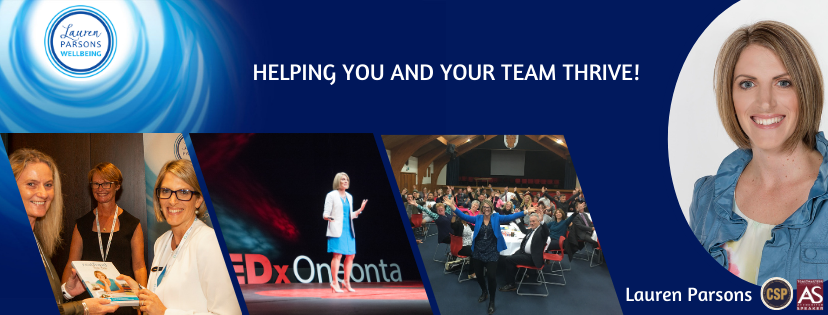An excerpt from Lauren Parsons’ book ‘Thriving Leaders Thriving Teams’.
In 2012, Google undertook a project to discover which conditions created the highest performing teams. Named ‘Project Aristotle’ after his quote, “the whole is greater than the sum of its parts”, the researchers discovered the number one factor to create a high-performing team is psychological safety.
Psychological safety makes people feel comfortable expressing themselves without fear of retribution. It allows people to speak up without worrying they’ll be embarrassed, ignored or blamed.
Psychological Safety in Action
David Altman, Chief Operating Officer of the Centre for Creative Leadership, says, “People need to feel comfortable speaking up, asking naïve questions, and disagreeing with the way things are in order to create ideas that make a real difference. Psychological safety at work doesn’t mean that everybody is nice all the time. It means that you embrace the conflict, knowing that your team has your back, and you have their backs.”
Early in his career, Altman was asked to take over as interim director of a newly funded, high-profile foundation project focused on community-based health promotion and disease prevention.
He remembers being confronted in the first meeting with a team of people who all had decades more experience than him. His self-talk was a combination of positivity, “Wow, what a great opportunity I’ve been given” and self-doubt, “I don’t know how to lead this team and build a world-class organisation.”
In their meetings, he found team members both supported and vigorously challenged one another as they tried to figure out how to enact their funder’s bold vision. They shared openly and “each gave their best to make the programme a smashing success”. When they failed, they used it as fuel to drive future success instead of blaming each other.
One day they hosted a public meeting in one of their facilities with the president of the foundation, a distinguished international healthcare leader, in attendance. It went very poorly.
Afterwards, he pulled the team aside and told them he was “profoundly disappointed in their work”. They were devastated and worried he was going to pull the funding, just as they were getting started.
It was tough feedback to receive. Yet after that feedback Altman said, “The team pulled together and took interpersonal risks with each other. We fundamentally challenged what we were doing and pushed for new and innovative ideas that we had rejected previously.” The candour of their conversations and the decisions they took as a result helped them create a new plan which resulted in an additional $7 million funding.

Psychological Safety at Work
All day, every day, people are navigating interpersonal risks at work. We head into a meeting and worry (either consciously or unconsciously) about looking ignorant, incapable or disruptive. Amy Edmondson states, “In most workplaces today, people are holding back far too often – reluctant to say or ask something that might make them look bad.”
When we feel safe with our colleagues, oxytocin levels in our brains rise, eliciting trust and trust-making behaviour. This is a huge factor in team success. Leaders can work to create a ‘psychological safety net’ that helps staff feel safe to share new ideas, question things, experiment, and speak up for things they feel are important.
In teams with high psychological safety, people feel confident no one will punish or embarrass anyone for admitting a mistake, asking a question or offering a different opinion. This has two significant benefits. One, it leads to a plethora of small and large innovations, improvements and new ideas. Plus, it ensures staff feel included, heard and valued. Staff win and the organisation wins.
This is exactly the culture leaders cultivate at Pixar, which underpins their success.
Pixar Studio’s Story
Pixar’s President, Ed Catmull, instituted a unique process called a BrainTrust as a way to continually assess and improve every part of a movie before it’s released. Taking place regularly throughout a film’s development, BrainTrusts bring together the film’s director with a group of other experienced directors and producers who are invited to openly critique the movie’s footage to date.
To work effectively, complete candour is required. BrainTrusts can be harsh. Contrary to what happens in most meetings – where people hold back from fear of being embarrassed or embarrassing others – participants are encouraged to point out every flaw they see. They dissect film footage, moment by moment, sharing honestly which parts felt flat, which characters seemed unbelievable and which storylines were confusing.
They’re Pixar’s way of constantly improving things iteration by iteration, detail by detail. Catmull says, “The BrainTrust is the most important thing we do by far.” He admits, “All our movies suck at first. The BrainTrust is where we figure out why they suck, and it’s also where they start to not suck.”
To create a safe and honest environment, they follow certain rules. Feedback is always constructive, delivered with empathy, focused on the project not the person, and offered as a suggestion, not a command. The team isn’t allowed to suggest solutions, only to highlight problems. This allows directors to focus on hearing the feedback without getting defensive, which is the key reason they’re there. Catmull instructs his team to focus on candour above all else. He often sits in on the sessions; not to have input, but simply to oversee the process.
An example of how effective his process was came in 2006, when Disney bought Pixar. Disney had been struggling with unsuccessful films for years. Catmull and Chief Creative Officer John Lasseter decided to keep the Disney Animation studio completely separate from Pixar. They focused on rebuilding trust among Disney’s demoralised staff and introduced BrainTrusts.
With this new approach, they went on to produce highly successful films such as Tangled, Wreck It Ralph and Frozen (the highest grossing animated film of its time). Catmull notes that, interestingly, it was largely the same people who were there when Disney was failing. Those same people were now able to create huge successes. He simply made it safe to communicate with such candour that it transformed their results as a group.

When Things go Wrong
If psychological safety is low, clever, capable, well-meaning people can’t or won’t share their observations or ideas at crucial moments. If staff are afraid to stand out, be wrong or offend their colleagues, they may stay quiet when their contribution could have made a difference. In a situation where a nurse holds back from questioning a doctor on a patient’s dosage out of fear, the results could be fatal.
Edmondson explains that, “More than just business failure is at stake when psychological safety is low. In many workplaces, people see something physically unsafe or wrong and fear reporting it. Or they feel bullied and intimidated by someone, but don’t mention it to supervisors or counsellors. This reticence unfortunately can lead to widespread frustration, anxiety, depression, and even physical harm.”
How Do You Build Psychological Safety?
- Commit and communicate the importance – Leaders need to make it a clear priority and set the example, regularly communicating how vital candour is among team members.
- Ask great questions and listen deeply – Create a safe environment that encourages people to be open and honest and to feel heard.
- Facilitate everyone speaking up – Encourage positive, productive conflict and invite diverse opinions to be shared.
- Make failure ok – Embrace failures with curiosity, reflection and a ‘what can we learn from this?’ mindset.
Practical Ideas:
- Have learning reflection sessions focused on past failures or mistakes. (Make it a ‘failure party’ if you want, where you eat cake and discuss what worked, what didn’t and what could go better next time.)
- Ask questions like “What other points of view are we missing here?”
- Make it normal to admit when you don’t know what to do next and to invite ideas.
- Preface questions with comments like, “There are no wrong answers on this one. I’m curious…”
- Ensure everyone has the time and opportunity to contribute (and actively encourage quieter team members in a supportive way).
- Make it the norm to share how you’re feeling – in one-on-ones and team meetings.
- Practise putting yourself in other people’s shoes, or seeing things from a different perspective.
- Share meeting roles such as chair, timekeeper, note taker, so people feel they’re on a level playing field.
- Remind team members that conflict can be positive and productive when offered with respect.
- Invite truth-telling and encourage feedback.
- Share stories about learnings from past failures.
Enjoyed this article?
To find out more about building trust in your team read the whole Thriving Leaders, Thriving Teams book. Order your copy today here.
Complete will full colour, full page illustrations, it’s a fantastic guide to help you stop languishing and start flourishing.
“This book is a treasure trove of tips and insights on the landscape between wellbeing and leadership. Lauren generously shares her knowledge and experience on how to help leaders and their teams to thrive both personally and collectively”.
– Lotty Roberts, Founder of Mind.U
“This is a hugely important book with a powerful mission at its heart. If you want to cultivate and sustain the right conditions for your team and workplace culture to flourish, this book is your guide, your support and your inspiration.”
– Steven Hargreaves, Author of The Compassionate Leader’s Playbook
About the Author – Lauren Parsons, CSP, AS
Lauren is a keynote speaker, author and consultant who’s passionate about helping busy people discover little-used techniques to boost their energy, vitality and performance. She’s the only speaker in the world to focus on lifting BOTH workplace wellbeing and productivity.
Awarded NZ Keynote Speaker of the Year and Educator of the Year 2023/24 by the Professional Speakers Association. Lauren is a sought-after international speaker, one of only a dozen Certified Speaking Professionals and the only Accredited Speaker in New Zealand.
TEDx speaker, Author of Thriving Leaders Thriving Teams and Real Food Less Fuss, Founder of the Snack on Exercise movement and host of the Thrive TV Show. With over 20 years’ experience, Lauren integrates her wellness and business background to help leaders find the sweet spot between boosting both wellbeing and productivity.
Described as unforgettable and life-changing, Lauren is a dynamic and highly-engaging presenter, and master story-teller who will have you laughing, moving and learning in a memorable way. Whether it’s virtual or in-person, you will leave Lauren’s session feeling uplifted and empowered to create positive change, today!
Based in the Manawatu, New Zealand, where she lives with her husband and three children, Lauren can often be found hosting dinner parties, playing board games, running, reading or getting out in her gumboots to walk the paddocks. She travels regularly to speak at conferences and in-house and specialises in helping leaders create positive, energised workplaces where people thrive.
Check out all the goodness at Lauren’s “Free Stuff” page at www.LaurenParsonsWellbeing.com

Ways to connect with Lauren
- Find out about conference keynotes
- See her most popular topics
- Make a time for a virtual cuppa over zoom
Share this Post
